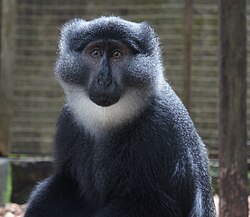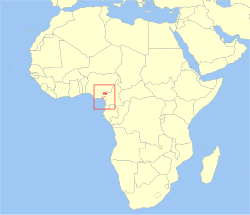| Allochrocebus | |
|---|---|
 | |
| L'Hoest's monkey | |
| Scientific classification | |
| Kingdom: | Animalia |
| Phylum: | Chordata |
| Class: | Mammalia |
| Order: | Primates |
| Suborder: | Haplorhini |
| Infraorder: | Simiiformes |
| Family: | Cercopithecidae |
| Tribe: | Cercopithecini |
| Genus: | Allochrocebus Elliot, 1913 |
| Type species | |
| Cercopithecus lhoesti [1] Sclater, 1899 | |
| Species and subspecies [2] | |
| |
Allochrocebus is a primate genus including the terrestrial guenons: [2] the L'Hoest's monkey, [3] the Preuss's monkey, [4] and the sun-tailed monkey. [5]









